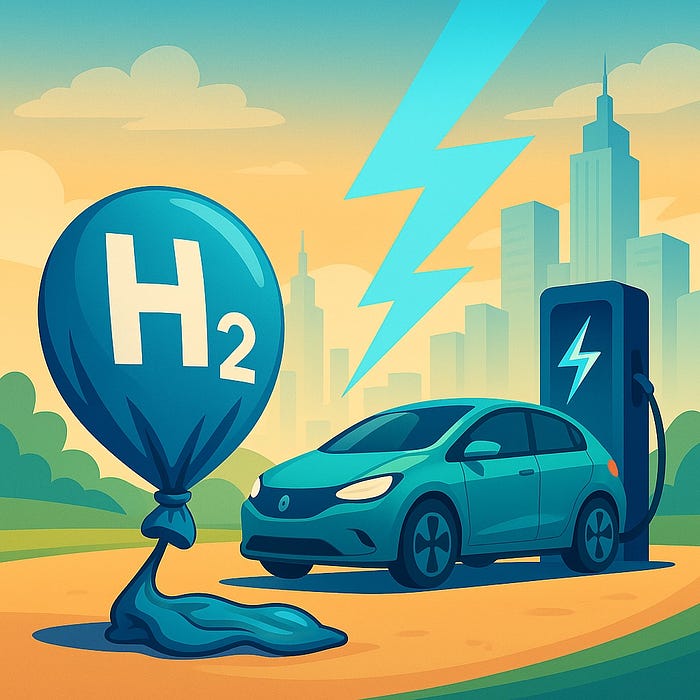How many times have we heard that hydrogen-powered cars are "the future"? Well, that future has been collapsing like a house of cards for a long time now. Stellantis, the world's fourth-largest automaker, has just announced that it is cancelling its entire fuel cell program, citing major drawbacks. In the first half of 2024, 5,621 hydrogen vehicles were sold, compared to 4.5 million battery EVs.
And while executives are jumping ship, some angry pioneers are already calling their lawyers: Toyota Mirai owners in California are suing the brand after discovering that idyllic hydrogen refueling is instead an odyssey of shut-down pumps and abusive prices, leaving them with unsellable vehicles.
It's not like they weren't warned: in 2021, I explained that blue hydrogen was the oil industry's latest big (and disgusting) lie; in 2022, I said that hydrogen in automotive applications made no sense; and last summer, I went so far as to call it "the great hydrogen scam". Now, time and thermodynamics have put things in their place, although long-time hydrogen advocates will now devote themselves to hiding under rocks.
The reason is a simple matter of physics. Converting electricity into hydrogen is 70% efficient, compressing or liquefying it, transporting it, converting it back into electricity inside a fuel cell around 60%, and finally, moving the wheels results in losses of close to 70%, which ultimately gives an overall efficiency of 45%, with the added detail that hydrogen-powered cars have more moving parts, making them more expensive to maintain than EVs, and unlike them, cannot be charged at home.
The prestigious Fraunhofer Institute quantified these losses and concluded that hydrogen was not even any good for powering heavy trucks. Obviously, it is much better than the appalling inefficiency of a combustion engine vehicle if we consider the entire process from the oil field to the road, which is between 17% and 21%, but compared to batteries that convert more than 90% of the energy from the grid into motion, the debate is simply settled. As we said, it's a simple matter of physics, and specifically thermodynamics.
The oil lobby still tried to save the narrative with the oxymoron of "blue hydrogen," but nature and science again ruined the plan: a peer-reviewed study showed a deeper climate footprint than coal. Even its own lobbyists confessed to leaving their posts embarrassed by the lies they had been peddling.
Now, the facts are piling up. Honda has shelved its hydrogen development line after admitting that it's no longer viable and is now focusing on producing battery-powered EVs. And an explosion at a Norwegian hydrogen refueling station forced Toyota and Hyundai to halt sales in 2019, anticipating what was to come. Now we are seeing multimillion-dollar contracts canceled, plants closed and manufacturers redirecting investments toward batteries. All this while oil companies tried to buy time by promoting a product that allowed them to continue pumping gas.
So here we are, in July 2025, contemplating the ruins of the promise of hydrogen on wheels. Where are those who claimed it was "inevitable"? Where are their headlines about "refueling in three minutes" and "zero emissions" (conveniently omitting methane leaks and those from tanker trucks)? Gone, or worse, hiding behind class action lawsuits. What was hydrogen in automotive? Simply a delaying tactic to try to prevent the growth of electric vehicles while attempting to generate a new line of business for oil companies.
The moral of the story is simple: physics does not negotiate. The car of the 21st century will be electric, connected and powered by electrons traveling through wires, not by a gas that wastes two-thirds of the energy it touches. Every euro, every minute, and every subsidy diverted into the mirage of hydrogen has been time lost in the race to decarbonize transportation. The good news is that there is no longer any doubt: the scam has been exposed, meaning we can now focus on an electric future free of smart Alecs insisting: "The future is hydrogen"…
(En español, aquí)


